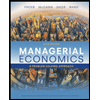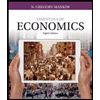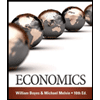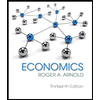The graph below shows the marginal cost (MC), average variable cost (AVC), and average total cost (ATC) curves for a firm in a competitive market. These curves imply a short-run supply curve that has two distinct parts. One part, not shown, lies along the vertical axis (quantity-0); this represents a condition of production shutdown. Where is the other part? Use the straight-line tool to drawit. To refer to the graphing tutorial for this question type, please click here Price and cost 18 15 14 13 12 10 19/21 SUBMIT ANSWER 13 OF 21 QUESTIONS C OMPLETED 28 MacBook Pro 금□ F7 F8 F9 F1o F2 F3 F5
The graph below shows the marginal cost (MC), average variable cost (AVC), and average total cost (ATC) curves for a firm in a competitive market. These curves imply a short-run supply curve that has two distinct parts. One part, not shown, lies along the vertical axis (quantity-0); this represents a condition of production shutdown. Where is the other part? Use the straight-line tool to drawit. To refer to the graphing tutorial for this question type, please click here Price and cost 18 15 14 13 12 10 19/21 SUBMIT ANSWER 13 OF 21 QUESTIONS C OMPLETED 28 MacBook Pro 금□ F7 F8 F9 F1o F2 F3 F5
Managerial Economics: A Problem Solving Approach
5th Edition
ISBN:9781337106665
Author:Luke M. Froeb, Brian T. McCann, Michael R. Ward, Mike Shor
Publisher:Luke M. Froeb, Brian T. McCann, Michael R. Ward, Mike Shor
Chapter7: Economies Of Scale And Scope
Section: Chapter Questions
Problem 2MC
Related questions
Question

Transcribed Image Text:The graph below shows the marginal cost (MC), average variable cost (AVC), and average total cost (ATC) curves for a firm in a
competitive market. These curves imply a short-run supply curve that has two distinct parts. One part, not shown, lies along the vertical
axis (quantity-0); this represents a condition of production shutdown. Where is the other part? Use the straight-line tool to drawit.
To refer to the graphing tutorial for this question type, please click here
Price and cost
18
15
14
13
12
10
19/21
SUBMIT ANSWER
13 OF 21 QUESTIONS C
OMPLETED
28
MacBook Pro
금□
F7
F8
F9
F1o
F2
F3
F5
Expert Solution
This question has been solved!
Explore an expertly crafted, step-by-step solution for a thorough understanding of key concepts.
This is a popular solution!
Trending now
This is a popular solution!
Step by step
Solved in 2 steps with 1 images

Recommended textbooks for you

Managerial Economics: A Problem Solving Approach
Economics
ISBN:
9781337106665
Author:
Luke M. Froeb, Brian T. McCann, Michael R. Ward, Mike Shor
Publisher:
Cengage Learning

Essentials of Economics (MindTap Course List)
Economics
ISBN:
9781337091992
Author:
N. Gregory Mankiw
Publisher:
Cengage Learning

Microeconomics: Principles & Policy
Economics
ISBN:
9781337794992
Author:
William J. Baumol, Alan S. Blinder, John L. Solow
Publisher:
Cengage Learning

Managerial Economics: A Problem Solving Approach
Economics
ISBN:
9781337106665
Author:
Luke M. Froeb, Brian T. McCann, Michael R. Ward, Mike Shor
Publisher:
Cengage Learning

Essentials of Economics (MindTap Course List)
Economics
ISBN:
9781337091992
Author:
N. Gregory Mankiw
Publisher:
Cengage Learning

Microeconomics: Principles & Policy
Economics
ISBN:
9781337794992
Author:
William J. Baumol, Alan S. Blinder, John L. Solow
Publisher:
Cengage Learning


Economics (MindTap Course List)
Economics
ISBN:
9781337617383
Author:
Roger A. Arnold
Publisher:
Cengage Learning
